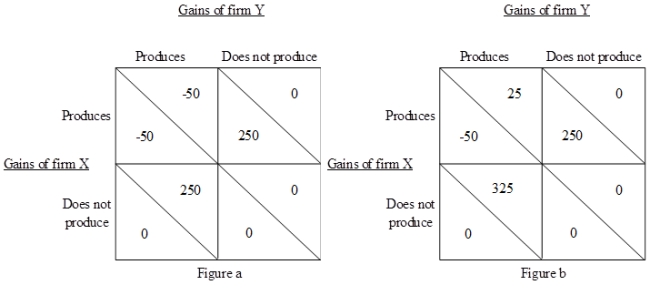Multiple Choice
Consider firm X belongs to country A and firm Y belongs to country B. Suppose that it is technologically feasible for both firms to produce good Z. Also assume that if they do, then they will be the only suppliers of good Z in the world. Now, both the firms have to decide simultaneously whether to produce good Z or not. Figure (a) shows the payoffs of both firms if their respective governments do not provide them with export subsidies. Figure (b) shows the payoffs when the government of country B grants an export subsidy to firm Y, but the government of country A does not. From Figure (a) , we can correctly infer that: 
A) it is optimal for firm X not to produce if firm Y does not produce.
B) both firms can decide to produce since they can anticipate that the other firm will not produce.
C) it is optimal for firm Y not to produce no matter what firm X does.
D) both the firms will suffer losses if they produce simultaneously.
Correct Answer:

Verified
Correct Answer:
Verified
Q16: An export subsidy imposed in a large
Q17: Which of the following is said to
Q18: The figure given below represents the domestic
Q19: Which country had no antidumping cases until
Q20: The figure given below represents the domestic
Q22: An export subsidy can be good for
Q23: A price support on agricultural products is
Q24: Persistent dumping can occur if a profit
Q25: Antidumping duties increase overall economic well-being in
Q26: A firm maximizes profits by charging a